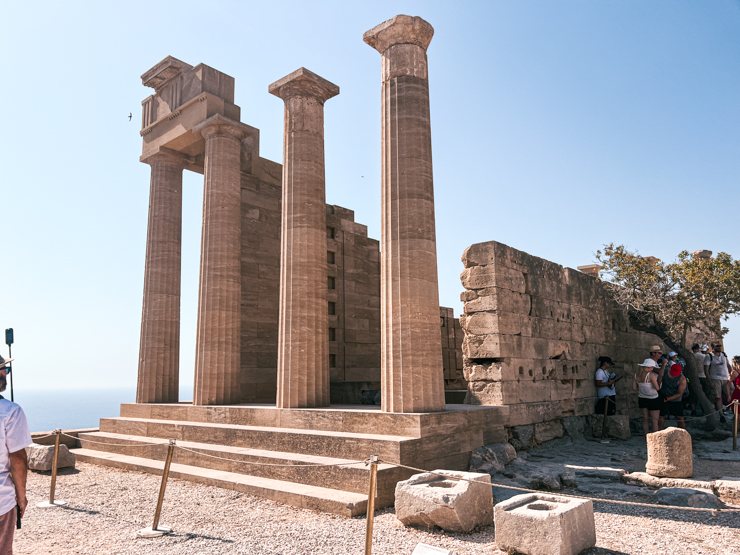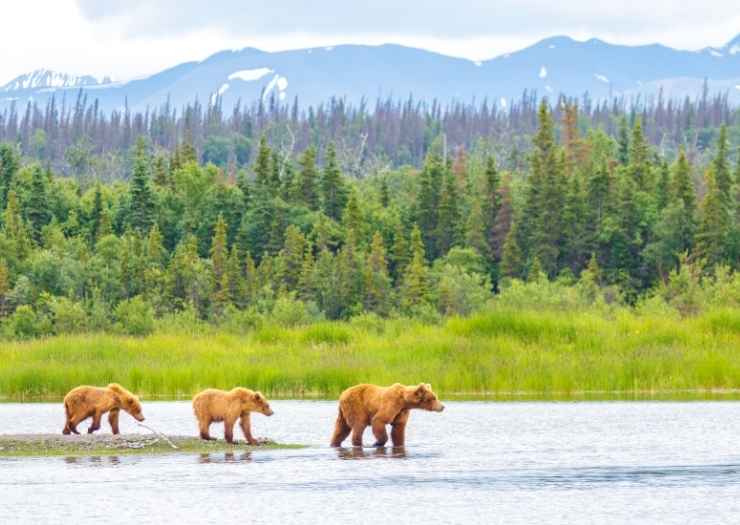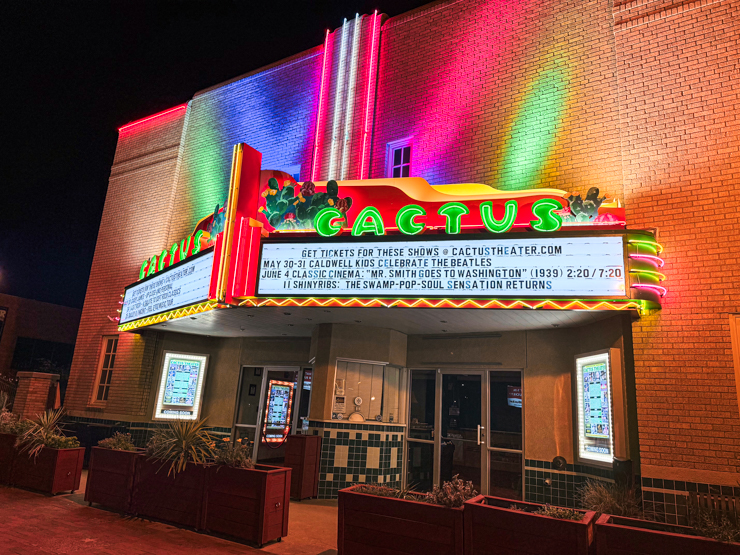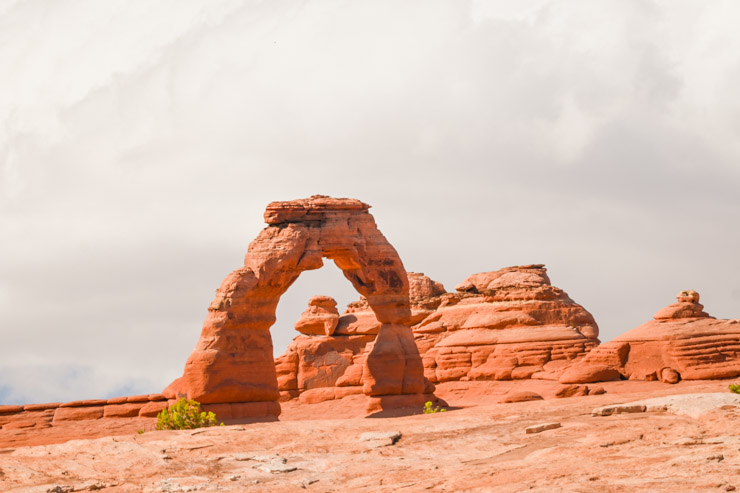Volcano National Park, Big Island Hawaii
Hawai’i Volcano National Park is located on the Big Island. This captivating destination is know for one of the world’s most active volcanoes. Initially established as Hawaii National Park back in 1916, it continues to draw over 1.7 million annual visitors. Nevertheless, it’s essential to bear in mind that these visitation numbers can fluctuate. This is due to various factors, such as global events, weather conditions, and volcanic activity. In this post, we will explore the myriad attractions of this remarkable park, offering an unparalleled fusion of adventure and natural beauty. From traversing volcanic landscapes and trekking scenic trails,to beholding the mesmerizing might of an active volcano. There’s something for everyone to experience on the near 523 square miles of National Park. Join us as we embark on a journey through Hawai’i Volcanoes National Park. You will enjoy nature’s fiery embrace of one of Hawaii’s national treasures.
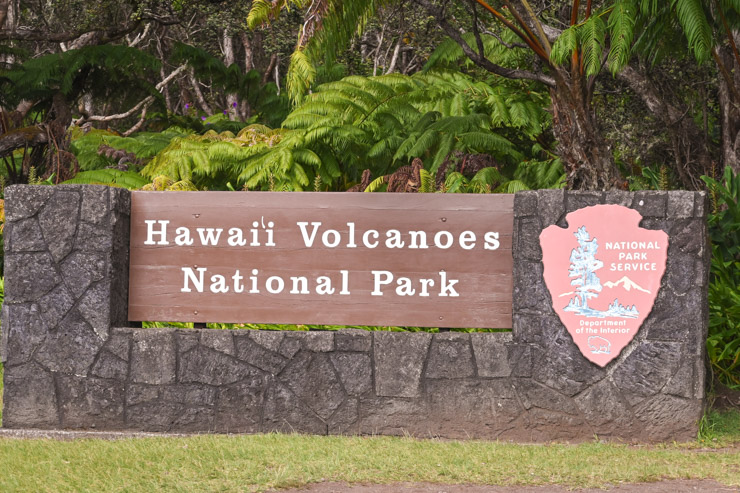
History of Volcano National Park Big Island and Park Info
It is important to delve into the rich geological and cultural significance that this iconic destination holds for visitors. Hawaii Volcanoes National Park is a haven for adventure seekers and nature lovers alike. One of the world’s most active volcanoes – Kīlauea, that has been erupting for over three decades. The park is home to breathtaking lava tubes, formed by the flow of molten lava. This provides a fascinating glimpse into the volcanic activity that has shaped the landscape.
For those looking for a thrilling drive to see the caldera rim. The Crater Rim Drive offers stunning views of the volcano and its surrounding area. This scenic road takes you on a journey through lush rainforest, past volcanic craters, and offers breathtaking vistas of the coastline. Your first stop should be at the Kilauea Visitor Center and Park headquarters. Here you can learn more about the park’s history and geology, as well as get updates on current volcanic activity.
Volcano National Park Big Island is not just about adventure and natural wonders, but also boasts a rich cultural heritage. The park is home to sacred sites and ancient petroglyphs at Pu’uloa. Which translates to “long hill”. Providing a glimpse into the traditions and beliefs of the native Hawaiian people. Visitors can also explore the park’s museums and cultural exhibits. Here you can learn more about the history and significance of this unique destination. It’s also a Unesco World Heritage Site and is also a designated international biosphere reserve. So enjoy all of the naive Hawaiian cultural landscapes and critical habitat that this National Park has to offer.
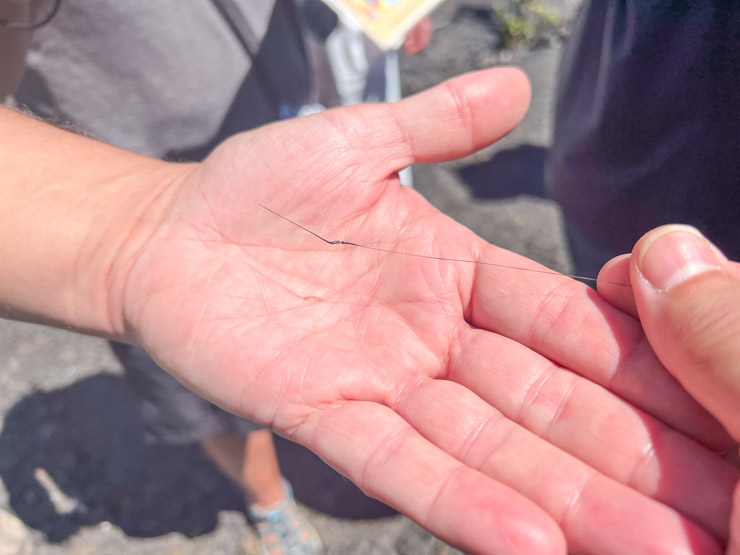
Pele
Pele, the revered Hawaiian goddess of fire and volcanoes, plays a significant role in the mythology and cultural heritage of Hawaii. In Volcanoes National Park on the Big Island, Pele’s presence is deeply felt. As this is where her elemental power is most vividly on display through the active volcanoes, particularly Kilauea. Visitors to the park often pay their respects to Pele and leave offerings as a sign of reverence for her connection to the land and the ever-evolving volcanic landscapes that shape this remarkable island. It is also important to note that you should not remove anything from the National Park.
Hawaii Volcano National Park on the Big Island is open daily, 24 hours a day, 7 days a week, as well as all holidays. The Kīlauea Visitor Center is located on Crater Rim Drive a short distance from the entrance station on the right. The Hawai’i Volcanoes National Park Kahuku Unit is located on Hwy 11, between mile marker 70 and 71. The unit is 70.5 miles south of Hilo. The Kahuku Unit is open Thursday through Sunday from 8 a.m. to 4 p.m. and is closed on Monday, Tuesday, and Wednesday.
Check their Website for Closures
When planning a visit to Hawai’i Volcano National Park on the Big Island. You should make a quick stop at the park’s gov website before you go. Here, you can stay up-to-date with crucial information regarding park closures. Given the dynamic nature of volcanic activity and various environmental factors, the park’s status can change unexpectedly. The website provides real-time updates on closures, road conditions, and safety alerts. This will help ensure that your visit is not only enjoyable but also safe. Whether you’re a first-time visitor or a seasoned park enthusiast. This online resource is an invaluable tool to help you make informed decisions about your visit and adjust your plans accordingly.
They will also keep you up to date on active lava flow. There were a lot of closures on the website during our visit and we almost didn’t go. I am so glad we did because our hike was one of the best things we did on the Island. There was still a ton to see and we were exhausted by the end of the day.
One of the must-visit websites is the Hawaii Volcanoes Observatory website. The Hawaiian Volcano Observatory (HVO) is a research institution. Their monitoring center located on the Big Island of Hawaii, and it’s operated by the United States Geological Survey (USGS). HVO is dedicated to studying and monitoring the active volcanoes on the Hawaiian Islands. With a particular focus on the volcanoes of the Island of Hawaii, which includes Kilauea, Mauna Loa, Hualalai, and Mauna Kea. Here you can check the seismic activity in the area. The Kīlauea Visitor Center is another great place to start your adventure. With informative exhibits and knowledgeable rangers, you’ll get all the information you need to explore the park safely.
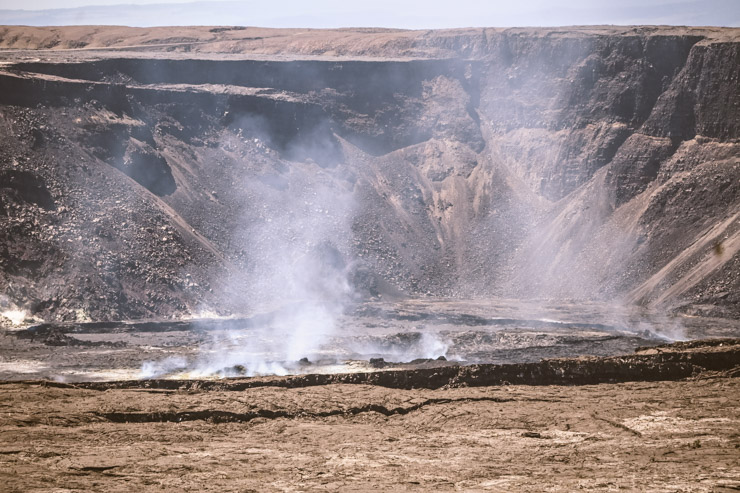
Exploring the Volcanic Landscapes and Lava Flows
The volcanic landscapes of Volcano National Park on the Big Island offer an unparalleled opportunity to witness the raw power and beauty of nature’s geological forces. With its stunning volcanic craters, lava flows, and unique geological formations, Hawaiʻi Volcanoes National Park on the Big Island is a must-visit destination for adventure seekers and nature enthusiasts alike.
One of the park’s highlights is the Thurston Lava Tube, a natural tunnel formed by the flow of lava. Exploring the lava tube is like stepping into another world. A dark, mysterious world that once served as a conduit for molten lava. As you walk through this ancient lava tube, you can’t help but feel a sense of awe and wonder at the sheer power of nature. The lava tubes are lit but the lights turn off at 8pm so plan accordingly.
Crater Rim Trail
For those seeking a more challenging adventure, the Crater Rim Trail is a must-do. This 11-mile trail takes you on a journey around the rim of Kīlauea Volcano. It offers breathtaking views of the surrounding landscape and the ever-changing volcanic activity. From steam vents to sulfur banks, every step along this trail is a reminder of the dynamic nature of the Earth beneath our feet.
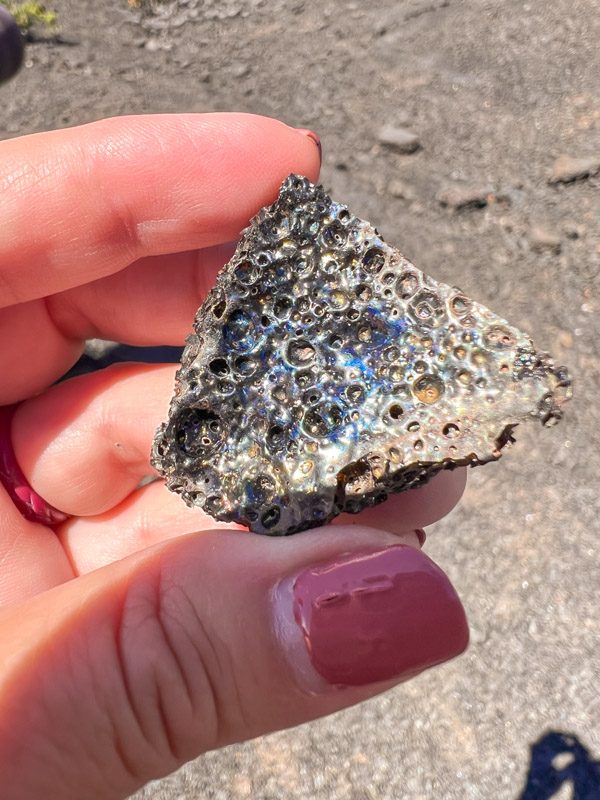
Chain of Craters Road
Driving the Chain of Craters Road in Volcanoes National Park on the Big Island is a captivating journey. It winds its way through the island’s volcanic wonders. As you travel along this scenic route, you’ll encounter several stunning craters, including the impressive Mauna Ulu, Pauahi, and Lua Manu Craters. However, the real gem awaits at the end of Chain of Craters Road. This is where you’ll discover the awe-inspiring sea arch, a testament to the relentless power of nature. This natural arch carved by the sea offers a breathtaking view, with the endless expanse of the Pacific Ocean as a backdrop. Making it a must-see destination for those exploring the park’s volcanic landscapes. It was about an hour drive for us and we stopped at several craters for pictures.
It’s important to note that there are no provisions for food, water, or fuel available along the entirety of Chain of Craters Road. However, visitors can find vault-type toilets provided at both the Maunaulu parking area and at the road’s terminus for their convenience.
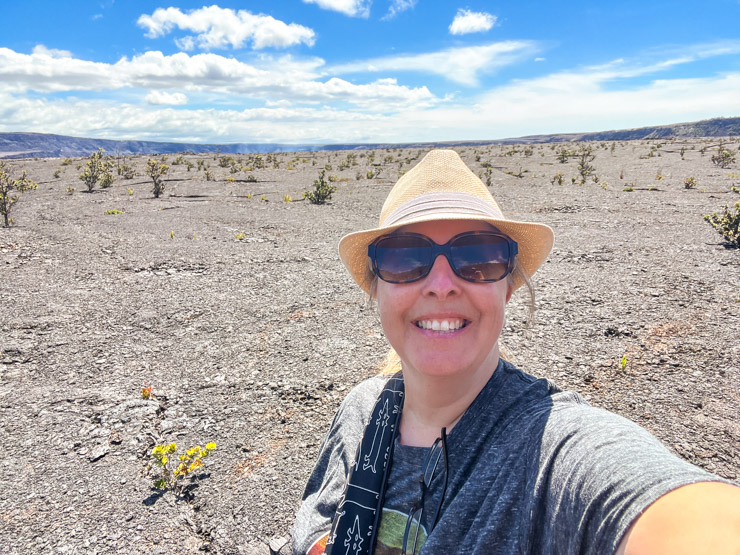
Hiking Trails and Scenic Views + Free Guided Hike
With miles of trails to choose from, we were so excited to find that the park offered a free guided tour. The tour was led by John a local, volunteer who was an absolutely wonderful tour guide. He took us on a 3.7 mile hike that included a closed area where we were able to walk on the crater floor. There we saw the smoking vents, looked at beautiful lava rocks up close, and even searched for what they call Pele’s Hair. You’ll see a photo of it in our hands.
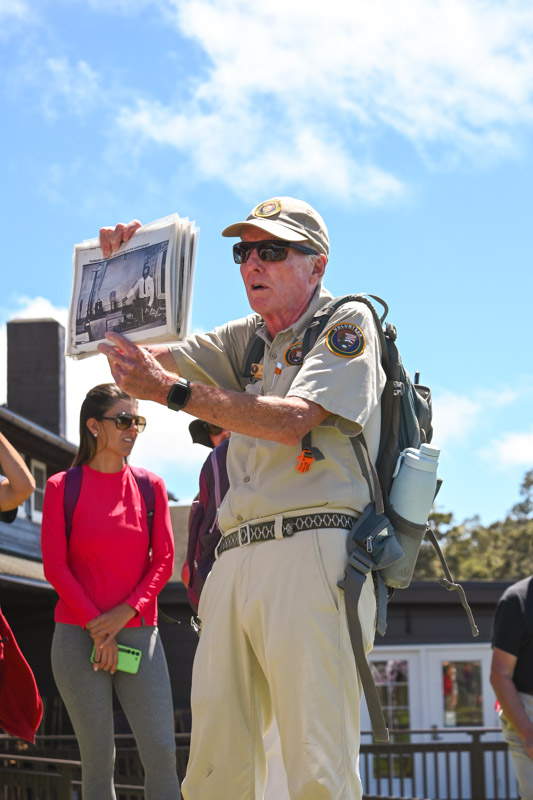
What makes this park amazing is, you could come back at any time and the park could change. Whether you’re a seasoned hiker or just a casual nature lover, there’s something for everyone to enjoy in this volcanic wonderland.
The parking lot for the Kilauea Caldera Overlook is on the left side of Crater Rim Drive about . 7 miles past the Steam Vents.
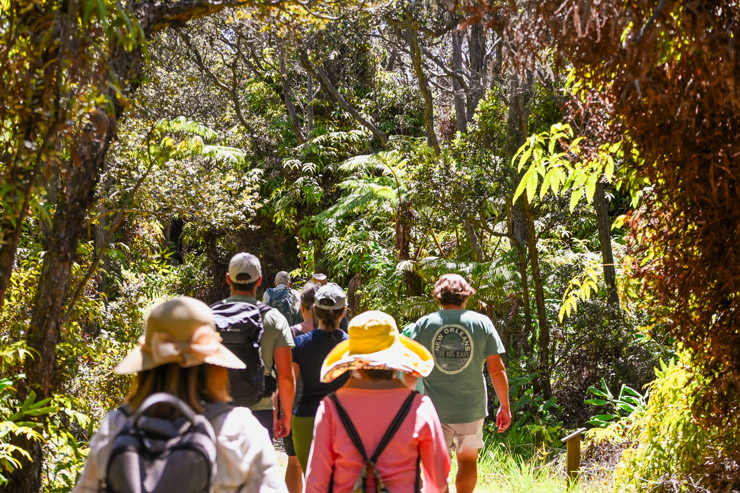
Hiking Trails
Now, let’s talk about the hiking trails. From easy strolls to more challenging treks, Volcano National Park offers a range of options for every fitness level. The Crater Rim Trail is a popular choice, offering stunning views of the Kīlauea Caldera and steam vents. For those seeking a longer hike, the Kīlauea Iki Trail takes you through a lush rainforest before descending into Kilauea Iki overlook and crater.
More about the Trails:
- Kilauea Iki Trail: This is a popular day hike that traverses the floor of the Kilauea Iki Caldera. It’s approximately 4 miles round trip and provides a unique perspective of the caldera’s interior.
- Crater Rim Trail: The Crater Rim Trail is a longer hike that encircles the Kilauea Caldera, offering breathtaking views of the volcanic landscape. It’s about 11 miles in length and provides a more extensive exploration of the park.
- Devastation Trail: For a shorter hike, the Devastation Trail is a great choice. It’s a relatively short trail at around half a mile, offering a glimpse of the stark, moon-like landscape created by past eruptions.
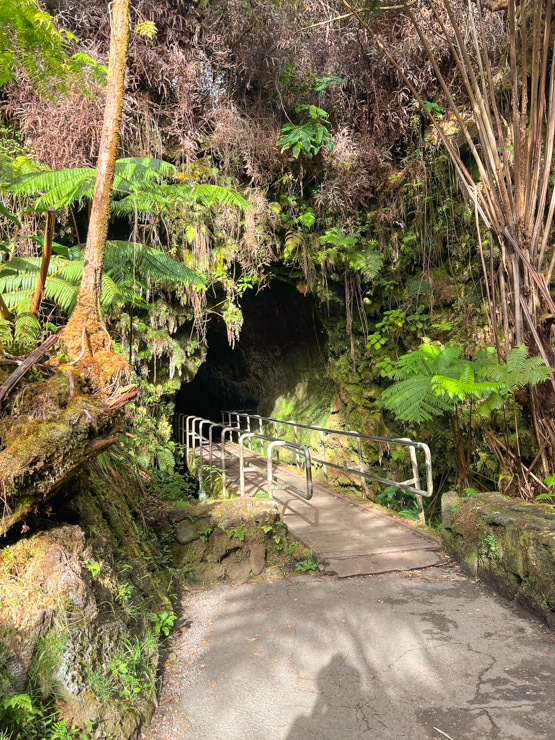
4. Thurston Lava Tube Trail: This short trail takes you to the fascinating Thurston Lava Tube, a subterranean cave formed by lava flow. It’s an easy and short walk, perfect for a quick excursion.
These trails provide a diverse range of experiences, from shorter walks like the Devastation Trail and Thurston Lava Tube Trail to longer day hikes like the Kilauea Iki Trail and the more extensive Crater Rim Trail that offers an immersive exploration of the caldera’s rim.
If you’re looking for a truly unique experience, consider joining one of the park’s free guided hikes. Led by experienced rangers, these tours provide valuable insights into the park’s history, geology, and native flora and fauna. Plus, you’ll have the opportunity to ask questions and interact with fellow nature enthusiasts. Check at the visitors center for availability and times. Our hike started at 11:00 but those times are subject to change.
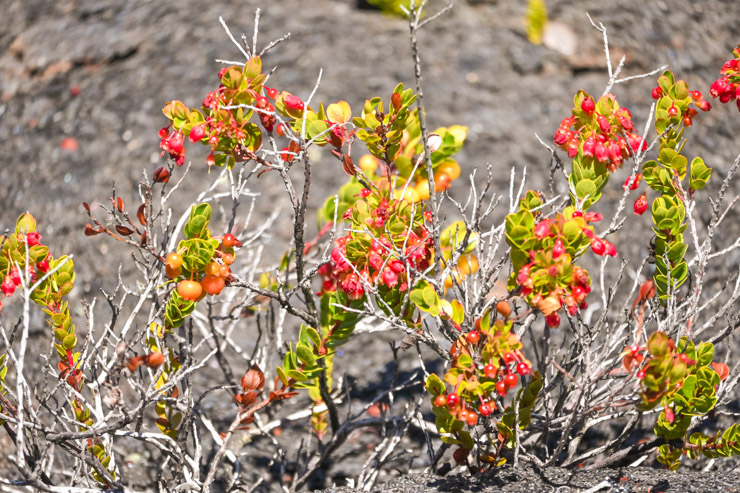
Wildlife and Plant Life in Volcano National Park on the Big Island
Spotting rare bird species and observing unique plant adaptations are just a few of the experiences visitors can have while exploring the diverse wildlife and plant life in Volcano National Park.
One of the park’s most fascinating features is the sulphur banks, where vibrant yellow deposits form around steam vents. The pungent smell of sulphur fills the air as visitors marvel at this otherworldly sight. Nearby, native plants such as the silversword and ohelo berry thrive in the volcanic soil, showcasing their remarkable ability to adapt to the harsh conditions.
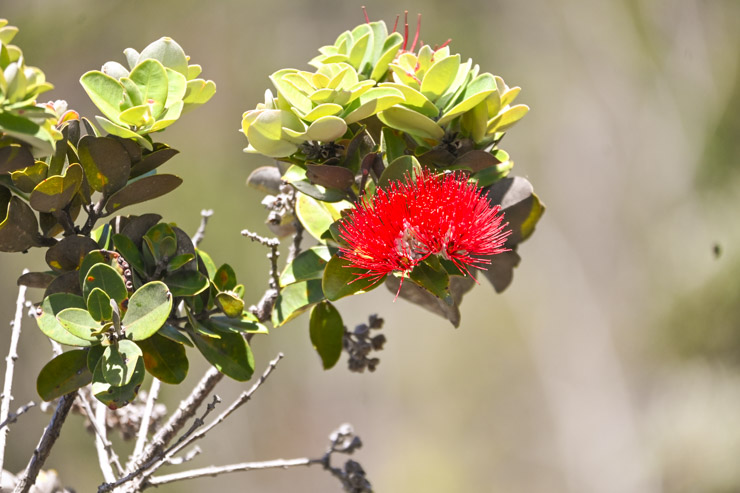
As visitors continue their exploration, they may stumble upon cultural sites that offer a glimpse into the rich history of the island. Ancient petroglyphs carved into lava rocks tell stories of the indigenous people who once inhabited this land. The park also boasts a native forest, where towering trees provide shade and shelter for a variety of wildlife, including the endangered Hawaiian hoary bat.
Whether you’re hiking along the park’s scenic trails or simply taking in the breathtaking views, Volcano National Park offers a truly immersive experience. With its diverse wildlife, unique plant life, and fascinating cultural sites, it’s one of the best places to enjoy the great outdoors.
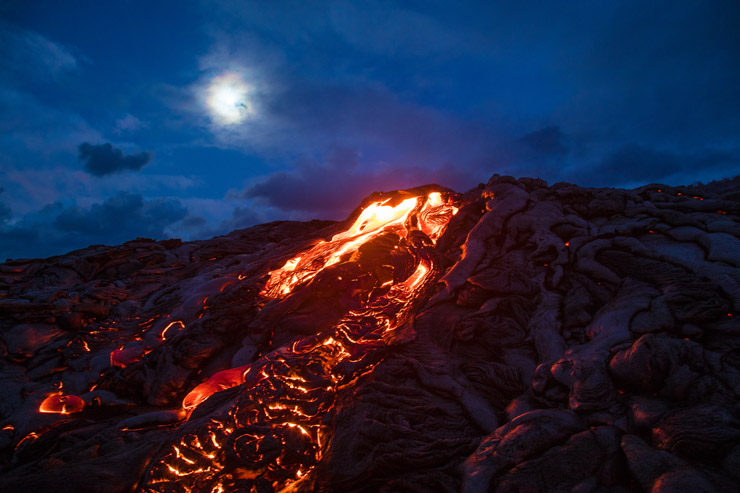
Witnessing the Power of an Active Volcano at Volcano National Park on the Big Island
Experiencing the awe-inspiring force of an active volcano erupting is a once-in-a-lifetime opportunity that leaves visitors in complete awe and wonder. Volcano National Park on the Big Island of Hawaii offers the chance to witness the power of an active volcano up close and personal. As you make your way through the park, you’ll encounter breathtaking views, mesmerizing landscapes, and the raw energy of Mother Nature.
One of the must-visit spots in the park is the Sulphur Banks. Here, you can witness the striking yellow and orange hues created by the sulfuric gases that escape from the earth’s crust. It’s a surreal experience, walking among steam vents, feeling the heat beneath your feet, and smelling the distinct scent of sulfur in the air.
Hydrogen sulfide (H2S)
Hydrogen sulfide (H2S) is a naturally occurring gas that can be found in volcanic areas, including Volcanoes National Park on the Big Island of Hawaii. It is one of the gases released during volcanic eruptions, and its presence is closely related to the geothermal and volcanic activity in the park. The National Park Service at Volcanoes National Park closely monitors gas emissions and provides regular updates and warnings to visitors. When gas concentrations are elevated and potentially hazardous, certain areas of the park may be temporarily closed, or visitors may be advised to exercise caution or avoid specific locations.
If you’re lucky enough to be there during a volcanic eruption, you’ll witness an unforgettable spectacle. The ground rumbles beneath you, and the sky fills with billowing smoke and ash. Lava flows down the mountainside, illuminating the night sky with an otherworldly glow. It’s nature’s fireworks display coming from a lava lake. A sight that will leave you in awe of the Earth’s power.
Before planning your visit, it’s important to check the current conditions of the park. Volcanic eruptions can be unpredictable, and certain areas may be closed for safety reasons. The park’s website provides up-to-date information, ensuring that you can have a safe and memorable experience.

Volcano House Lodging and Food
The Volcano House offers exceptional accommodations and delectable cuisine for those seeking a comfort amidst the captivating wonders of Volcano National Park. Located on the Big Island, this historic hotel provides guests with a unique opportunity to stay in close proximity to one of the world’s most active volcanoes. It is also one the good places to see inside the Halemaumau crater.
The Volcano House hotel boasts a range of guest rooms, each offering stunning views of the surrounding volcanic landscape. From cozy rooms with rustic charm to spacious suites with modern amenities, there is something to suit every traveler’s taste. After a day of exploring the park’s main attractions, such as the Halema’uma’u Crater or the Thurston Lava Tube. Guests can unwind in the hotel’s comfortable lounges or take a dip in its refreshing pool.
When it comes to dining, the Volcano House does not disappoint. The hotel’s restaurant serves up a tantalizing array of dishes, showcasing the diverse flavors of the island. From fresh seafood caught off the coast to locally sourced produce, every meal is a culinary delight. For those seeking a more casual dining experience. The hotel also offers a café and a bar, perfect for enjoying a refreshing drink or a quick bite. If you aren’t staying here we recommend getting there early and doing the buffet breakfast. The food was delicious and we also had an early dinner there as well.
Volcano Village just outside Volcano National Park on the Big Island
Volcano Village is a charming and unique community nestled on the slopes of Mauna Loa. It’s just a stone’s throw away from Hawaii Volcanoes National Park on the Big Island. This quaint village serves as a perfect gateway to the awe-inspiring natural wonders of the park, including the world-famous Kilauea volcano. Visitors to Volcano Village can explore lush rainforests, captivating lava fields, and witness the power of the Earth’s geological forces. The village itself exudes a laid-back, artistic atmosphere. With its galleries, local cafes, and cozy accommodations, making it an ideal base for those seeking a deep connection to Hawaii’s volcanic heritage.
The Jaggar Museum
Demolition of the Jaggar Museum and Hawaiian Volcano Observatory complex is expected to begin in late 2023, bringing to an end a 96-year history of Jaggar Musuem at Hawaiʻi Volcanoes National Park. It was damaged due to continued and heightened seismic activity on May 11, 2018. After inspection it was never reopened. Here is a link to the history and future plans.
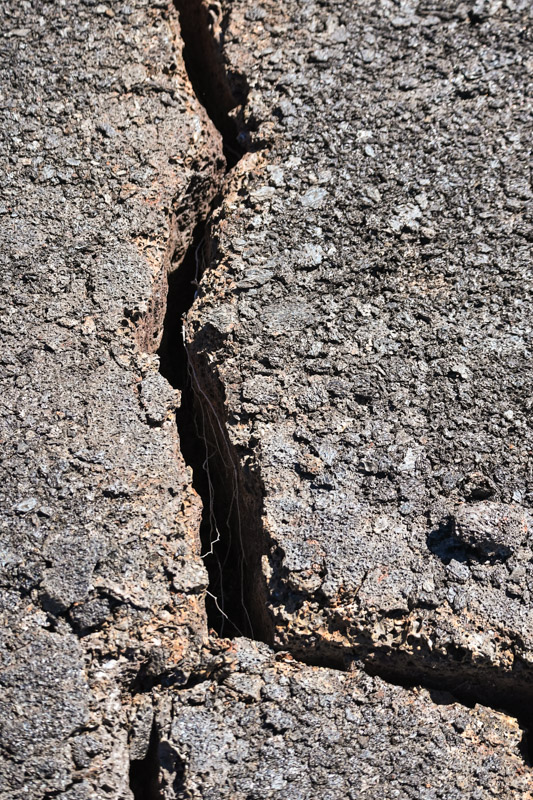
Mauna Kea
Not within Volcano National Park on the Big Island
Mauna Kea is a prominent geological feature on the Big Island of Hawaii and is distinct from Volcanoes National Park. Although it’s not within the park’s boundaries, Mauna Kea plays a significant role in the overall geological and cultural landscape of the island.
Here are some key points about Mauna Kea in relation to Volcanoes National Park:
- Geological Significance. Mauna Kea is one of the five volcanoes that form the Big Island of Hawaii, with the others being Mauna Loa, Kilauea, Hualalai, and Kohala. Mauna Kea, though dormant, is one of the tallest mountains in the world when measured from its base on the ocean floor. Its summit stands over 13,000 feet above sea level.
- Astronomical Observatories. The summit of Mauna Kea is renowned for its clear skies and minimal light pollution, making it an ideal location for astronomical research. Several world-class observatories are situated on Mauna Kea, and it is a hub for astronomers from around the globe.
- Cultural and Spiritual Significance. Mauna Kea holds immense cultural importance in Hawaiian history and is considered sacred. It is a place of spiritual significance in Hawaiian mythology and is associated with deities. The protection and preservation of Mauna Kea’s cultural heritage are paramount to the local indigenous community.
- Proximity to Volcanoes National Park. While Mauna Kea is not within the boundaries of Volcanoes National Park. It is relatively close geographically, being located on the same island. Visitors to the Big Island often explore both Mauna Kea and Volcanoes National Park. This gives them a comprehensive understanding of the island’s volcanic and geological heritage.
- Hiking and Recreation. Mauna Kea offers opportunities for hiking and outdoor activities. The summit is accessible by road, but due to its high altitude, visitors are advised to acclimate to the altitude gradually to avoid altitude sickness. Hiking on Mauna Kea provides striking views and unique landscapes.
In summary, while Mauna Kea is not directly part of Volcanoes National Park, it is closely tied to the island’s volcanic history, culture, and natural beauty. Making it a compelling destination for those interested in the geological wonders of the Big Island of Hawaii.
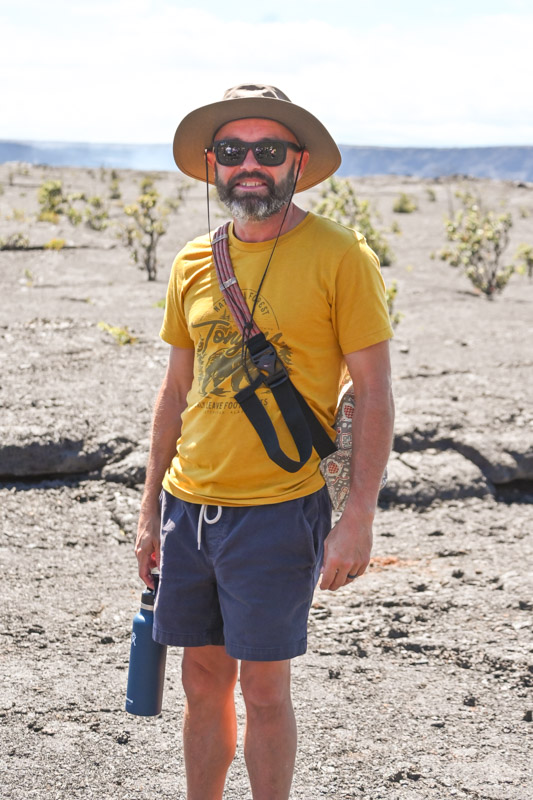
Tips for a Safe and Enjoyable Visit to Volcano National Park on the Big Island
To ensure a safe and enjoyable visit to Volcano National Park on the Big Island. It is recommended to always carry a sufficient amount of water and a good map. Park maps are available at the Visitors Center. They also have bathrooms ands areas to fill your water bottles if you need to. Before entering the park, make sure to stop by the park entrance to pick up any necessary permits or information. The park rangers can provide valuable insights and guidance on the best routes to take, based on current conditions and recent volcanic activity.
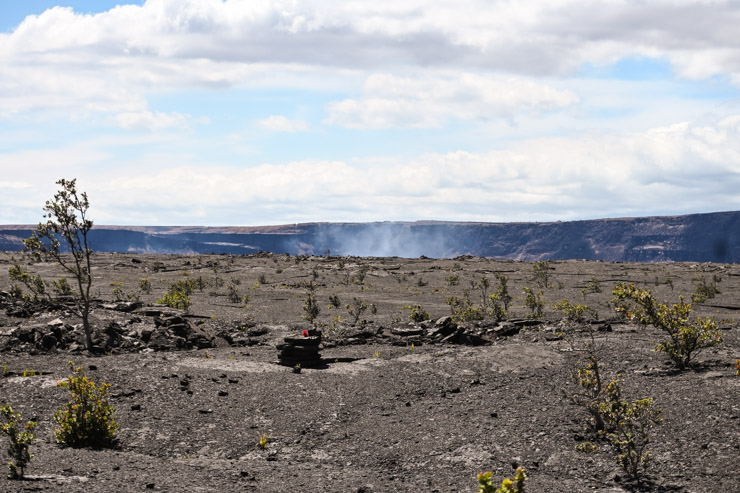
The best way to explore the park is by foot. This allows you to fully immerse yourself in the stunning landscapes and experience the true magnificence of the recent lava flows. However, it is important to stay on designated trails and follow any instructions given by park rangers or the National Park Service. They are there to ensure your safety and protect the fragile ecosystem of the park.
Things we brought with us to Volcano National Park on the Big Island
- Backpack. A hydration backpack allows you to being enough water to keep you hydrated without the hassle of keeping up with water bottles.
- Sun hat. The sun can sneak up on you when you are on the Big Island. Make sure you are wearing a good sun hat. You will thank me later.
- Hiking poles. While these are not necessary they come in handy. Hiking around the National Park you will encounter a lot of uneven surfaces. These poles will come in handy. Especially near the end of day when you are tired.
- Good hiking shoes. A bad pair of shoes can ruin a trip. Make sure you are wearing a good pair of hiking shoes.
- Sunglasses. While these aren’t necessary, they made my hike more enjoyable.
Bonus
We also recommend visiting Black Sand Beach (native Hawaiians call it Punaluʻu) nearby. It’s about a 19 minute drive from Volcanoes National Park. You might even get a glimpse of some sea turtles there! The sand can get a little hot and the lava rocks can be sharp. Make sure to wear a good pair of water shoes. We also met someone who stepped on a sea urchin and wasn’t wearing water shoes.
Family Destinations & Articles You Should Check Out
- Branson Mo Roller Coasters: The Fast and The Furious
- Visit the Arbuckle Mountains and Turner Falls Oklahoma
- Free Printable License Plate Game : Road Trip Games in the Car
- Traveling Tips for Visiting LEGOLAND Florida
- Nickelodeon Resort Punta Cana
- Travel to Dog Friendly Orlando Florida
- Pretend Play for Kids : Free Printable Travel Set
- 5 Teen Friendly Attractions in OKC
- 10 Disney Vacation Tips You Need to Know
- Travel Gatlinburg – Theme Parks and Attractions
- Free Printable Road Trip Budget Planner
- Visit Old MacDonald’s Farm
- Great Wolf Lodge & Holiday Inn Review
- Things to Do in Branson with Kids
FOLLOW US ON SOCIAL MEDIA
- Facebook Group
- Explore Oklahoma Facebook Group
- TikTok
- Hot Deals Group
- Recipe Group
- Homesteading Facebook Group
- Don’t forget to invite your friend’s to our Facebook groups! We would also love to see your vacation pictures!

